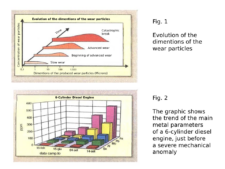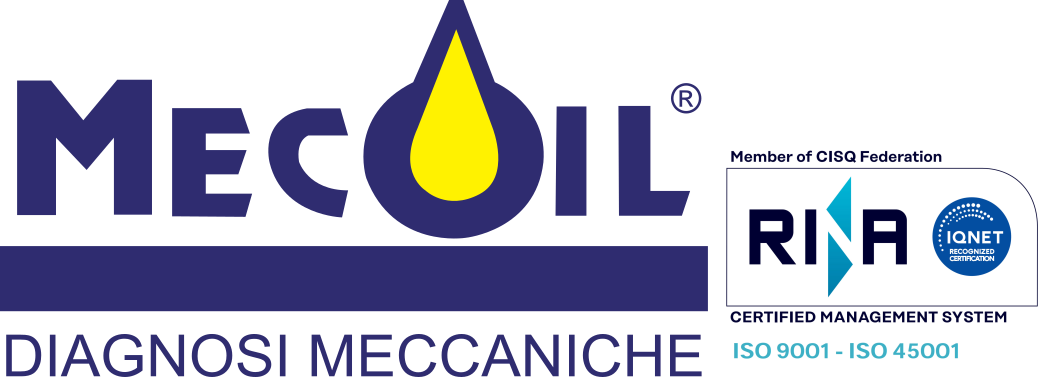From written experience, determined by the collaboration with the maintenance staff, we learn that a machine, regardless of its size, “speaks”, sending messages that are sometimes obvious, but often faint or difficult to recognize for those who do not have the appropriate equipment to understand them.
The plot of the story we are trying to grasp is woven with often fragmentary elements, relevant to different types of chemical and physical analysis. Simply observing the outside of a compressor, evaluating the condition of the environment in which it is located, the level of external cleaning, the absence of oil leaks, the efficiency of the suction filters and so on, we are able to understand the care put into its routine operations. In setting up an effective predictive program, we will proceed to gradually evaluate the subsequent levels of reliability of the system: performance testing, tribological analysis of lubricants, vibration or spectrum analysis, thermographs. All this with the goal of evaluating the residual “lubricity” of the oil load, as well as the efficiency and reliability of the machine.
The facts show that, among the different diagnostic technologies, one of the earliest and most effective to prevent damage from the initial stages is certainly the tribological analysis of circulating oil. The main aspects to be evaluated in order to set up a correct predictive program are many and not always easy to manage for the layman.
It is therefore necessary to find a partner that is reliable and competent in the field, not a simple laboratory, with which to create a project to prevent damage by educating operators, sensitizing them to the main issues of trichology, lubrication, sampling… In order to fully evaluate the importance of lubricant check-ups, we must start from the assumption that: “The entire modern industry depends on an oil film no thicker than 10 μm, roughly comparable to the diameter of a human red blood cell!”. The disappearance of this fluid protection will inevitably cause high friction and wear, which will soon lead to damage.
For several decades, the method of oil analysis aimed at the prevention of mechanical damage (in addition to the evaluation of the “conditions” of the fluid) has been the prerogative of an Air Force database, called “Soap Laboratory”. This acronym originates from the spectrometric investigation program of lubricants undertaken in the early 1950s by the American Air Force (Spectrometric Oil Analysis Program) in order to contain the damage on the first jet aircrafts and helicopters. There have been many burdens and problems associated with such a program, but the ultimate goal (during the years of “cold war”) more than saving money, is flight safety.
Avoiding damage of surely catastrophic consequences is enough to fully justify the investment of manpower and means. The investigation technique (at first only direct spectrometry, in emission or absorption) is so timely and effective that it has soon become a major element of the Aeronautics logistics sector.
The chemical/physical principle on which it is based is explained in the premises of trichology; in a mechanical system, the individual components interact with each other, and because of the friction they generate metal particulates roughly proportional to the load/stress applied; the lubricant in circulation provides the removal of these microscopic “shavings”. It then goes from a large production of submicronic elements (metalorganics) in the break-in adjustment phase, to the formation of flakes or corpuscles whose dimensions may exceed 20 μm, a conventionally accepted limit to indicate the onset of abnormal behavior.
Fig. 1 shows a graph with the dimensional evolution of the particulate matter. In order to evaluate the variation of a given parameter, based on the machinery’s time of operation, we observe the trend (not just the absolute values) relative to the established metal guides. The trend of certain elements (mainly iron, then copper, tin…) expressed as a weight increase (as well as the size and shape of the particulate), provides the actual history of the mechanism examined, without having to resort to an expensive and often difficult disassembly.
In the 80s, international correlation circuits were created (Joint oil anal. program, from the name of the inter-force program, also extended to the main NATO partners) and the conditions and procedures for transforming this discipline into an exact science were defined. Industry in general is affected by this technique; large engines (diesel or petrol) are a particularly suitable field of application.
The relatively small amount of oil involved – a volume of about 5-50 liters, which recirculate an average of 2-4 times per minute, actively pumped into all the most remote components – in addition to the different mechanical dynamics involved (a sum of sliding and rolling frictions, between gears, as well as rockers and cams, real “mills” for the suspended metal particles) transform the lubricant into an accumulation of organic and inorganic substances.
A simple drop of this “dirty” oil can therefore report on the functionality and efficiency of even the most intimate components of the engine itself. In addition, by comparing it with a “clean” oil sample it is possible to inform the operator about the condition of the lubricant and the efficiency of the filtering systems.
Fig. 2 shows a histogram of the metal content in the oil of a six-cylinder engine. Meanwhile, in the civil sector, lubricant manufacturers’ research is starting to assess the state and degradation of the oils in operation; they are no longer throw-away fluids (although they are products of low intrinsic value), but essential elements of the “machine system”, sometimes meant to be kept in operation for decades, such is the case of large steam turbine units. Specific additive packages are prepared and mineral or synthetic bases with very innovative characteristics and a wide range of uses are used.
Again, in order to assess the degradation of the active ingredients and the transformations that have occurred, it is necessary to carry out targeted analysis packages; the mechanic rubbing a drop of oil between his fingertips is no longer enough to evaluate the goodness of the product! Therefore, A.S.T.M. procedures (flash point, flow point, viscosity…) derived from classical chemistry are combined with empirical methods (FT-IR, Ferrography…) resulting from decades of experience. The result is condensed into a tribological analysis certificate, aimed at assessing wear (type and quantity of metals, size and shape of particles…) and life or residual “lubricity” (viscosity index, TAN…).
This type of diagnosis has clear correlations with traditional hematological and clinical analyses; in this case, the findings evaluate the increase of catabolites (uric acids, triglycerides…) that are harmful for humans and compare them with data obtained from healthy individuals. The goal is the same: acquiring the necessary elements to form an early “warning” diagnosis and intervening on its primary causes (diet, exercise…) instead of dealing with the harmful consequences that arise from failing to form good habits. Similarly, through various analytical findings (oil analysis, vibration, thermography) obtained both online and through spot interventions, the “machine system” can inform the maintenance technician about its “health status”. In order of precocity, the oil analyses are the most timely, in order to alert the employees on some of the most common malfunctions.

